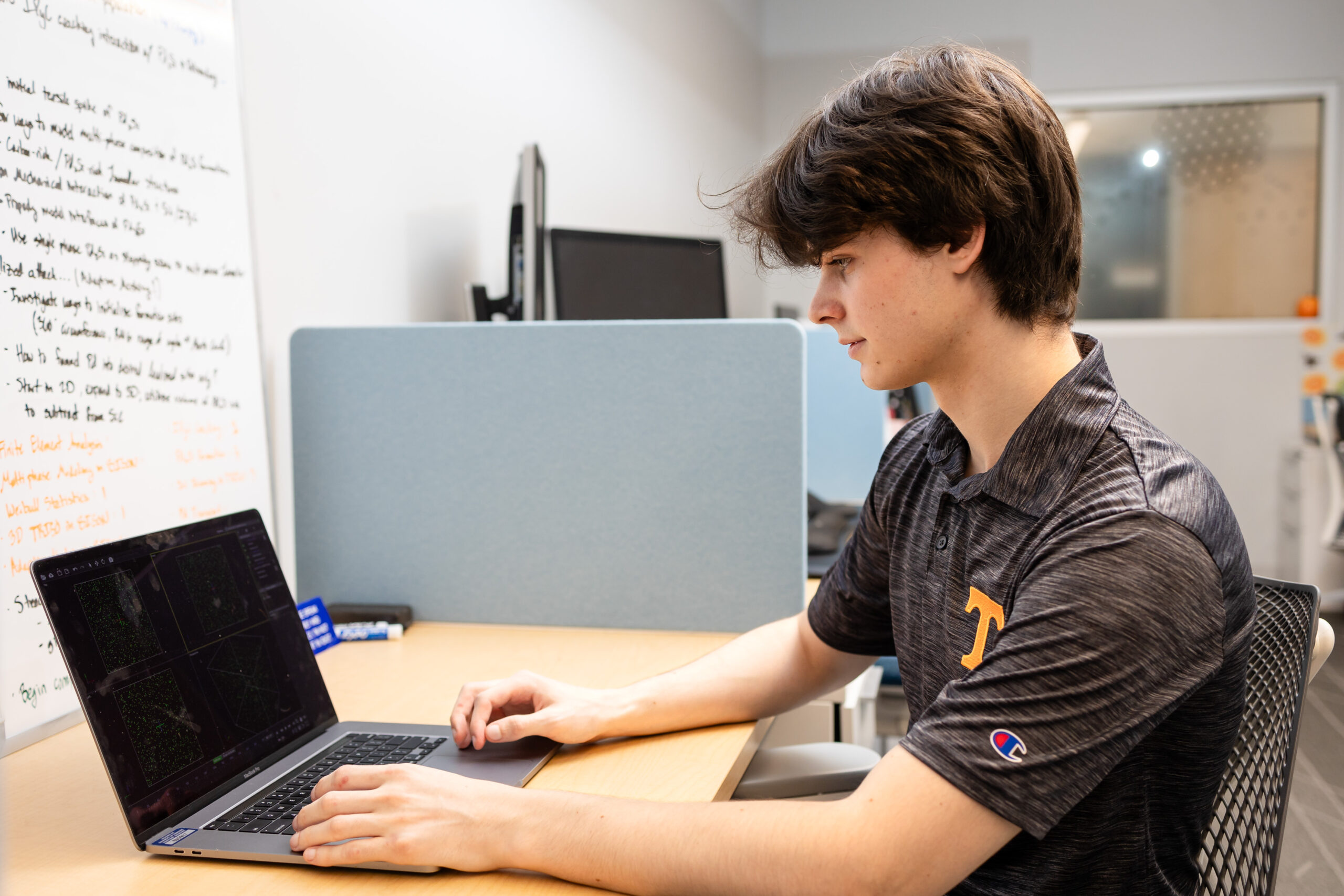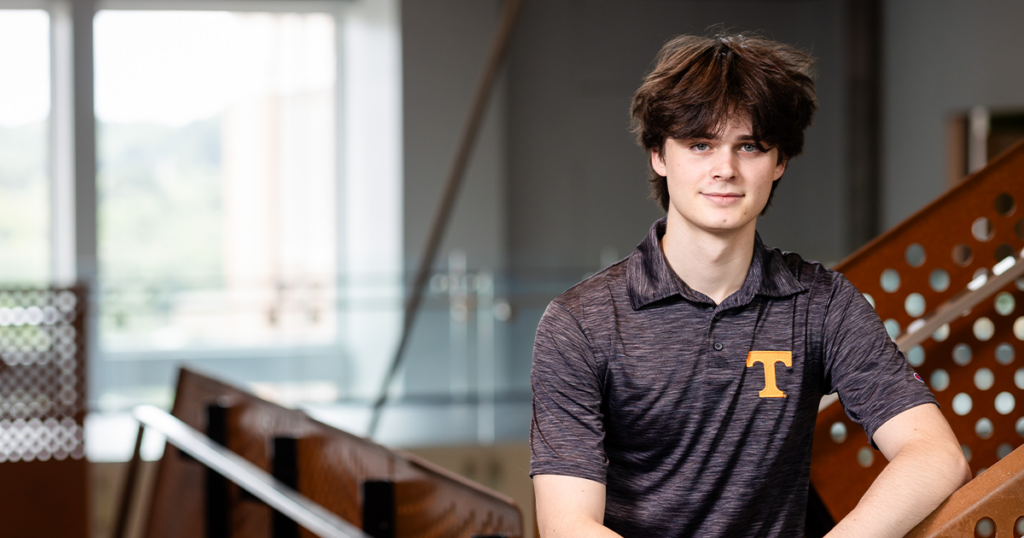Bursting Bubbles and Fixing “Fuzz”
In southern France, thousands of scientists from 35 countries are collaborating to build the world’s largest fusion device, ITER, which could pave the way to global carbon-free power.
In Knoxville, Tennessee, a UT sophomore is helping make sure the device will work as intended.
“Inside the reactor, you have a stream of really hot hydrogen and helium particles hitting this tungsten divertor, the component that sucks in heat and particles to minimize plasma contamination,” explained Samuel Haid, a nuclear engineering major working in Research Assistant Professor Sophie Blondel’s lab. “But some of the helium atoms are penetrating the tungsten and can actually damage it.”
Those helium atoms can become trapped in the damaged divertor, creating gas clusters or bubbles and pushing tungsten atoms off their lattice. Meanwhile, displaced tungsten atoms can aggregate on the surface of the divertor, creating a mat of tiny tendrils known as “fuzz.”
“It’s kind of like a gravitational field,” Haid said. “The bigger the bubble gets, the more likely it is that more helium atoms will come into that bubble. It’s like a runaway reaction.”
When the bubbles get too large, they burst, shooting the helium atoms back from the divertor to the reactor core. Theoretically, those atoms or other particles from the plasma could dislodge the fuzz off the divertor and send it rocketing into the plasma, reducing the reactor’s performance or even killing the reaction.
“No experimental facilities are currently capable of mimicking the extreme conditions of a fusion reactor like ITER,” Blondel said. “To ensure that the wall will not degrade too quickly and affect the reactor’s performance, we need accurate computational models.”
Nuclear Engineers Validating Computational Models
During her postdoctoral research at Oak Ridge National Laboratory (ORNL), Blondel helped develop Xolotl, a high-performance program used to simulate fuel-divertor reactions in nuclear reactors.
“We recently added a new model for helium bubbles in Xolotl, but we didn’t have the time to demonstrate that it performed well,” Blondel said. “Samuel’s work is an opportunity to test that model.”
Haid and fellow undergraduate Davis Freeman are using the program to study helium segregation and bubble formation in conditions like those predicted to occur in ITER.

“The goal is to have proof of concept, comparing Samuel’s results to the results of experiments and other simulations so that this model can then be applied to different materials,” Blondel said.
Haid and Freeman gather experimental results from published papers and plug the relevant readings into Xolotl simulations of devices with different features.
The undergraduates then observe the rate at which the simulated helium atoms move in and out of the divertor, how quickly the helium accumulates in the tungsten, and how much ends up staying there.
“I like to say we’re using a computer science program to do material science work for the nuclear engineering department,” Haid said.
Research Connects Undergrads with Wider World of Science
Haid, who has been coding since high school, admits to being a bit nervous when he first started working in Blondel’s lab.
“It’s kind of intimidating at first, because it’s coding, and coding is not the easiest thing to look at,” said Haid. “But I would say once you get the hang of it, it’s all about reading articles, understanding the data, and then putting that data into the simulation and seeing what it puts out.”
With Blondel’s guidance, Haid has left calibration simulations, which have known targets, behind to focus on theoretical simulations using new data.
“Involving undergraduates in research exposes them to a way of thinking that is different from standard class work,” Blondel said. “We don’t know the solutions to the problems we are looking at, and sometimes we don’t even find a solution, and this doesn’t mean it is a failure.”
Research opportunities also expand undergraduates’ understanding of a scientific field and the possibilities open to them after graduation. When Haid held a model monoblock—a component of the divertor’s armored surface—that Blondel brought back from a recent visit to ITER, he felt the deep connection between his simulations and the reactor half a world away.
“You never expect that just right off the bat, freshman year, you would be working with something like this,” he said. “My part may be small, but it’s small within a pretty big topic.”
Contact
Izzie Gall (865-974-7203, egall4@utk.edu)
